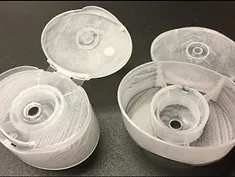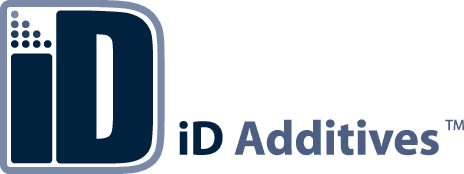One-Pellet-Solution
Most processors are using several additives procured from various sources. iD can analyze your additives needs and make one convenient concentrate or liquid to accomplish the functions of two or more additives.

Thermoplastics Knowledge
iD Additives’ knowledge of additives used in the thermoplastic industry includes:
- Pigments – Both standard and specializedUV stabilizers
- Heat Stabilizers
- Nucleates
- Antimicrobials
- Antistats
One-Pellet-Solution: Color Foam for Structural Foam Molding
| Problem | Analysis | Verdict |
|---|---|---|
|
Problem
Processing
|
Analysis
Feeding one product instead of two; only one feeder is needed which reduces cost, reduces maintenance, and calibration issues. The one-pellet-solution provides more consistency and reliability in let down measurement, which helps to create a much more dependable and cost effective process.
|
Verdict
|
|
Problem
Better Dispersion
|
Analysis
Improves performance of the foaming agent by giving better shot to shot consistency, which results in a better structural foam part.
|
Verdict
|
|
Problem
Cost of Product
|
Analysis
Combination of foaming agent and color concentrate is less expensive than buying the materials separately. Production savings of manufacturing one product instead of two is passed on to the customer.
|
Verdict
|
|
Problem
Cycle Reduction / Screw Recovery
|
Analysis
By using the color foam product we are able to, in most cases increase the amount of foam in the color concentrate, which will allow for faster cycles due to the reduction of nitrogen. The use of less nitrogen gas will allow for better screw recovery.
|
Verdict
|
|
Problem
Let Down Ratio
|
Analysis
By adding the foaming agent to the color, we are often able to increase the LDR of the foaming agent with no added cost. Example: If you are using a .3% LDR, iD Additives may be able to increase the foaming agent to .5% with no added cost, this would allow for less nitrogen which will give you better weight reduction and further reduce the cycle. Providing additional foaming agent in the process will provide additional nucleation of the nitrogen gas further reducing voids and improving cell structure. In some cases the LDR may be increased even higher with minimal added cost, which would reduce the weight and cycle even more. This produces a structurally stronger part with minimal if any post blow problems, while maintaining an improved cycle time. Post blow problems are the result of decreased cycle time with too much nitrogen. There are 3 ways to reduce post blow or blisters; reduce nitrogen and add material to the part, (which will increase the weight of the part), increase the cycle time, or reduce the nitrogen and increase the foaming agent, (which adds cost to the part).
|
Verdict
|
|
Problem
Overall Cost Reduction
|
Analysis
Based on previous trials with current customers we feel that you can save approximately 5 – 10% on overall foam costs when using color foam.
|
Verdict
|
|
Problem
Overall Cost Reduction
|
Analysis
Based on previous trials with current customers we feel that you can save approximately 5 – 10% on overall foam costs when using color foam. Solution: Packaging labeled on all four sides of the box; example: (MULTI-NOZZLE STRUCTURAL FOAM COLOR) or what the customer would like on their boxes to distinguish the product from a standard color without foam.
|
Verdict
|

Meet Ron Bishop, Foaming Agent Technical Manager
In the Plastics Industry since 1984, Ron Bishop was first introduced to Foaming Agents in 1986 when he went through a series of Paulson Training Program tapes. Ron can foam just about any part that you need to reduce weight & cycle.

